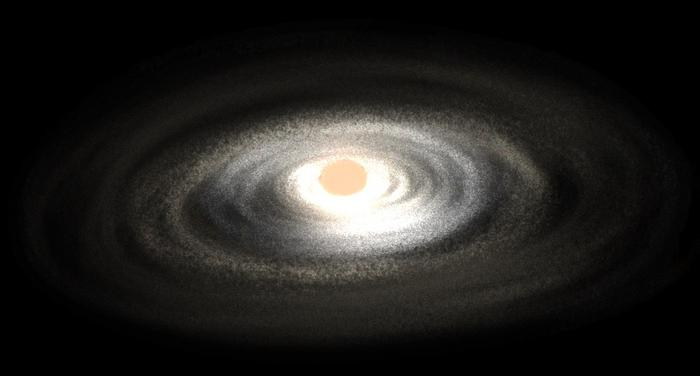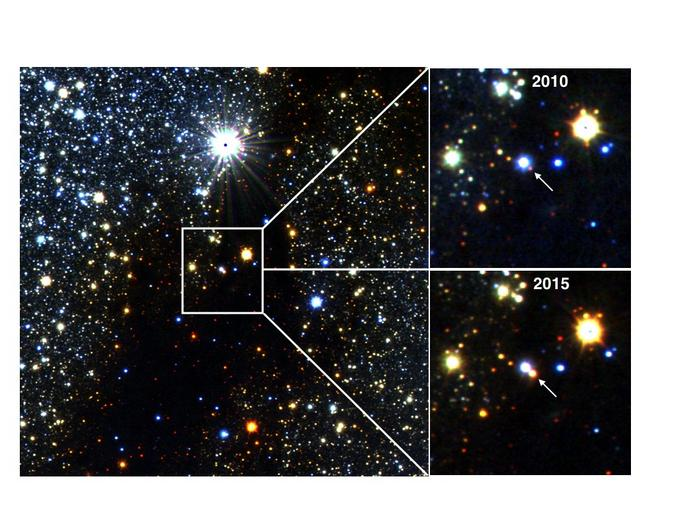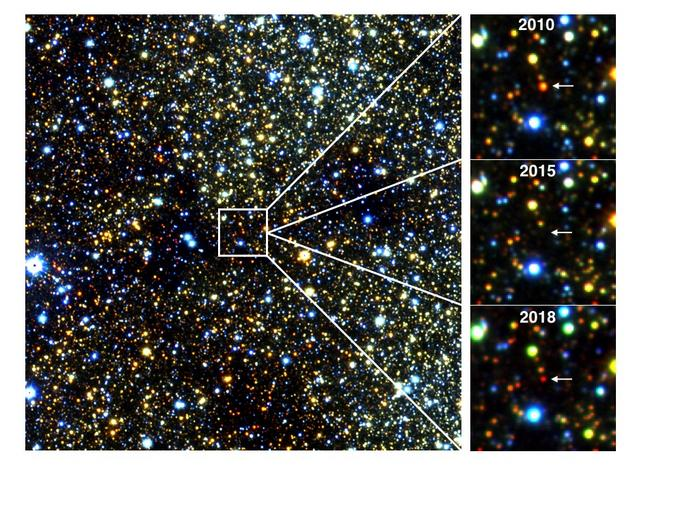A study of almost a billion stars in infrared light has revealed many currently invisible to us at other wavelengths, including new categories of rapidly changing objects. One of these, dubbed “old smokers”, are aging red giants that can suddenly release clouds of dark material that prevent light from escaping.
Dust blocks our view of the center of the galaxy in visible light, but infrared wavelengths are less affected. Unfortunately, the atmosphere has the opposite effect, blocking infrared light, which is why we are so dependent on the JWST. Nevertheless, the Visible and Infrared Survey Telescope (VISTA) in Chile sits above enough of the atmosphere to be able to study the galactic core in the near-infrared.
An international team dug into VISTA’s data for stars with the greatest brightness variations, choosing the top 222, including some where the cause was found to be microlensing events causing sudden brightening, rather than anything intrinsic to the star.
“About two-thirds of the stars were easy to classify as well-understood events of various types,” Professor Philip Lucas of the University of Hertfordshire said in a statement. “The rest were a bit more difficult so we used ESO’s Very Large Telescope to get spectra of many of them individually.”
The team was searching for protostars in the process of getting fusion started. These are known to undergo enormous outbursts lasting months to decades.

Artist’s impression of an eruption in the disc of matter around a newborn star. Like the Sun’s corona being hotter than its surface, the innermost part of the disc becomes hotter than the star itself.
Image Credit: Philip Lucas/University of Hertfordshire
“These outbursts happen in the slowly spinning disc of matter that is forming a new solar system. They help the newborn star in the middle to grow, but make it harder for planets to form,” said Dr Zhen Guo of the University of Hertfordshire. “We don’t yet understand why the discs become unstable like this.”
The search proved fruitful, capturing 32 protostars that underwent increases in brightness of a factor of 40 or greater in the 9.5 years of observations. Some became 30,000 percent brighter. By processing the data quickly, the team got to pay additional attention to some erupting stars at the peak and as their brightness declined. Average rise times were about two years, longer than the few examples that had been seen prior to this study.

Forty-fold increase in brightness in a protostar between 2010 and 2015. It has remained similarly bright since. The image was taken in wavelengths three times too long for our eyes. The cause of the outburst is not known.
Image Credit: Philip Lucas/University of Hertfordshire
Meanwhile, the search turned up something unexpected that may prove even more significant: 21 red stars that underwent more mysterious changes in brightness. On investigating seven of these in detail, the team determined they are older giants of a type never seen before.
“These elderly stars sit quietly for years or decades and then puff out clouds of smoke in a totally unexpected way,” said Professor Dante Minniti at Andrés Bello University. “They look very dim and red for several years, to the point that sometimes we can’t see them at all.”
These “old smokers” are concentrated in the Milky Way’s central Nuclear Disc, which explains why we have not seen their like before,

A red giant star near the center of the galaxy that faded for a few years as a result of obscuring smoke
Image Credit: Philip Lucas/University of Hertfordshire
The closer one gets to the center of the galaxy, the higher stars’ concentration of metals, a product of more generations of supernovae having seeded the region with heavy elements. It seems, therefore, that this smoking behavior is something that only occurs in stars with more metals than those we are used to observing.
Higher concentrations of metals make it easier for dust particles to condense out of gas around stars, or even in the cooler outer layers. Nevertheless, the team can’t explain what causes these erratic puffs that temporarily obscure the stars.
“Matter ejected from old stars plays a key role in the life cycle of the elements, helping to form the next generation of stars and planets,” Lucas said. “This was thought to occur mainly in a well-studied type of star called a Mira variable. However, the discovery of a new type of star that throws off matter could have wider significance for the spread of heavy elements in the Nuclear Disc and metal-rich regions of other galaxies.”
As galaxies age, supernovae and kilonovae have time to work their changes on the galactic equivalent of suburbs, causing the high-metal region to expand. Eventually, perhaps, old smokers will become a feature of our own stellar neighborhood.
The study is published as four open-access papers in the Monthly Notices of the Royal Astronomical Society. They include a general overview of the results; a more detailed exploration of the spectra of protostars and old giants; a study of the episodic accretion events thought to explain the outbursts among protostars and contribute to planet formation; and a detailed report on a single ongoing outburst where a protostar leapt to 16 times the brightness of the Sun, despite probably having only about a fifth of its mass.
Source Link: Galactic Search For Young Stars Discovers New Category Called “Old Smokers”